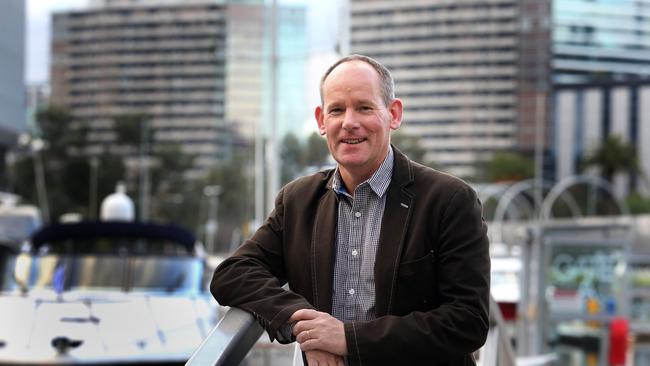Health Department set to audit Estia over aged-care claims
The aged-care giant has told the market it’s not the target of a government audit, as shares fall.

Aged care provider Estia Health has told the market it is not the target of a government audit, in an attempt to ease investor concerns about the company.
Shares in Estia are down 5.5 per cent at $4.98 following market talk that the government was increasing its audits of aged care providers because of concerns of over claiming of aged care funding instruments.
“Like all providers Estia is regularly audited by the government,” the company said in a statement to the market.
“There is no other government audit in relation to ACFI claims. Estia has materially more accurate claims than the industry average with a significantly lower error rate of one in 14 on ACFI claim submissions over the last two years, versus and industry average of one in eight.”
It follows The Australian’s report this morning that Estia Health, one of the country’s largest aged-care operators, is set to come under increased scrutiny from federal health bureaucrats and investors concerned about its rapidly rising trajectory of patient funding.
The firm, listed on the Australian Securities Exchange by its private equity owners nearly two years ago, is understood to be one of several providers in line for targeted Department of Health audits.
That move comes after years of rapid expansion, and with the federal government clamping down on non-compliant funding claims, after a sharp increase in the level of funding aged-care providers are receiving.
Estia has also attracted the attention of short-selling hedge funds, all questioning the sustainability of its aggressive roll-up acquisition strategy.
With a market capitalisation of $993m, Estia is headed by former Bupa executive Paul Gregersen.
Concerns have also been raised about the company’s practice of reclassifying residents of newly purchased facilities into higher care categories, which attracts extra government funding.
Aged Care Minister Sussan Ley told The Australian that as many as one-fifth of industry claims made for aged-care funding instruments had been ruled to be too high.
“There is no hiding away from the fact that the residential aged-care budget will blow out by a further $3.8 billion in the next four years without action to address inconsistencies in the way claims are currently made,” she said.
The government pays a fixed daily amount per person, with more funding available for residents who are judged to require more attention, using a system known as the aged-care funding instrument.
More than two-thirds of Estia’s annual revenues are derived from this funding, according to its financial statements.
Estia’s average daily payment per patient, already significantly higher than industry average, has grown at a faster pace than its peers.
Analysis shows that the company claimed $139 on average per patient per day in 2012, compared with an industry average of $131.
That gap widened to $14 in the last financial year — $170 compared with an industry benchmark of $156.
An Estia spokesman said the company was “sympathetic” to the view that the funding instrument was “too complex and not always clear”.
But he said the company’s experience allowed it to assist management teams at acquired sites to “better match the government subsidies with the actual care being delivered in the homes”.
“It is also noticeable that people entering residential aged care today have significantly higher acuity than only a few years ago,” he said.
A department spokesman said reviews were carried out at random, or based on a provider’s “overall claiming patterns and … history”.
He declined to confirm if Estia was on an audit “watch list” or how many companies were on the mooted list, but said the company had been reviewed “in proportion” to monitoring of the sector more broadly.
The government has taken action against 11 providers in the past three years for providing false, misleading or inaccurate information, with five reappraising all residents following repeated findings of incorrect claiming.
Estia is not among those operators previously targeted.
Concerned that funding rates are forecast to grow by 5.3 per cent this financial year against budgeted increases of 3.2 per cent, Canberra is hoping to claw back $1.2bn from providers through audits.
Aged Care Guild chief executive Cameron O’Reilly said he was not surprised to hear the government had increased audits of the sector.
But he argued that increased audits would not give the government the answer to what he said was its history of under-budgeting for aged care.
The guild represents the nine largest residential aged-care, for-profit, providers, which between them account for around 20 per cent of existing aged-care beds.
“In the longer term, the impact of the recent budget measures will impact the future supply of beds, which will lead to a shortage of places,” Mr O’Reilly said.
“That will lead to more elderly people with a higher acuity being in public hospital beds at a much higher cost to the community than if they were in aged care. So it’s a false economy.”
Quadrant Private Equity acquired Estia for around $175m in 2013, later rolling it in with a Mercury Capital-owned aged-care operator, floating the company in a $725m market listing in late 2014. Estia shares closed 1.8 per cent lower yesterday at $5.28.
It has since acquired Hutchinson Healthcare and other smaller outfits, swooping on Kennedy Healthcare late last year for about $270m, and now has 5900 beds with a target of 10,000 by the end of the decade.
Despite bullish outlooks from analysts at UBS, the bank which floated Estia alongside Morgan Stanley and Deutsche, others have grown wary of the stock.
Bank of America Merrill Lynch analysts William Dunlop and Elizabeth Miliatis last week forecast Estia would lose $24 per patient per day in revenue by 2019.
Morgan Stanley’s John Stavliotis has reduced his price target on Estia to $5.60.



To join the conversation, please log in. Don't have an account? Register
Join the conversation, you are commenting as Logout